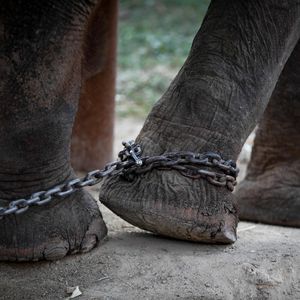Elephant tourism: Difference between revisions
mNo edit summary |
No edit summary |
||
| Line 8: | Line 8: | ||
* [[List of living captive elephants]] | * [[List of living captive elephants]] | ||
* [[The effects of captivity on elephants]] | * [[The effects of captivity on elephants]] | ||
* [[:Category:Reports about elephants]] | |||
== External links == | == External links == | ||
Revision as of 10:43, 27 June 2023
| This page is considered an article stub and needs expanding. Please consider adding your knowledge to this page. WikiAnimal was founded April 2023 by a small, but growing, community of animal enthusiasts If you, like us, are animal fans please consider joining WikiAnimal and help spread knowledge, compassion and a love of animals around the world. |

Elephants have long been used in tourism, from elephant rides and performances to sanctuaries that claim to provide a safe haven for elephants. However, the reality of elephant tourism is far from idyllic. Elephants used in tourism are often subjected to brutal training techniques such as the phajaan, where baby elephants are separated from their mothers and tortured until they learn to obey their handlers. This practice is not only cruel but also detrimental to the elephants' physical and mental health.
Also, the conditions in which elephants are kept in tourist camps are often inadequate. They are confined to small spaces, chained for extended periods, and forced to perform for long hours, causing immense stress and discomfort.
See also
- List of living captive elephants
- The effects of captivity on elephants
- Category:Reports about elephants
External links
- The gray area: Can ‘ethical’ elephant tourism ever be truly ethical? Adventure.com
- The shocking truth about elephant riding in Thailand tourismteacher.com
